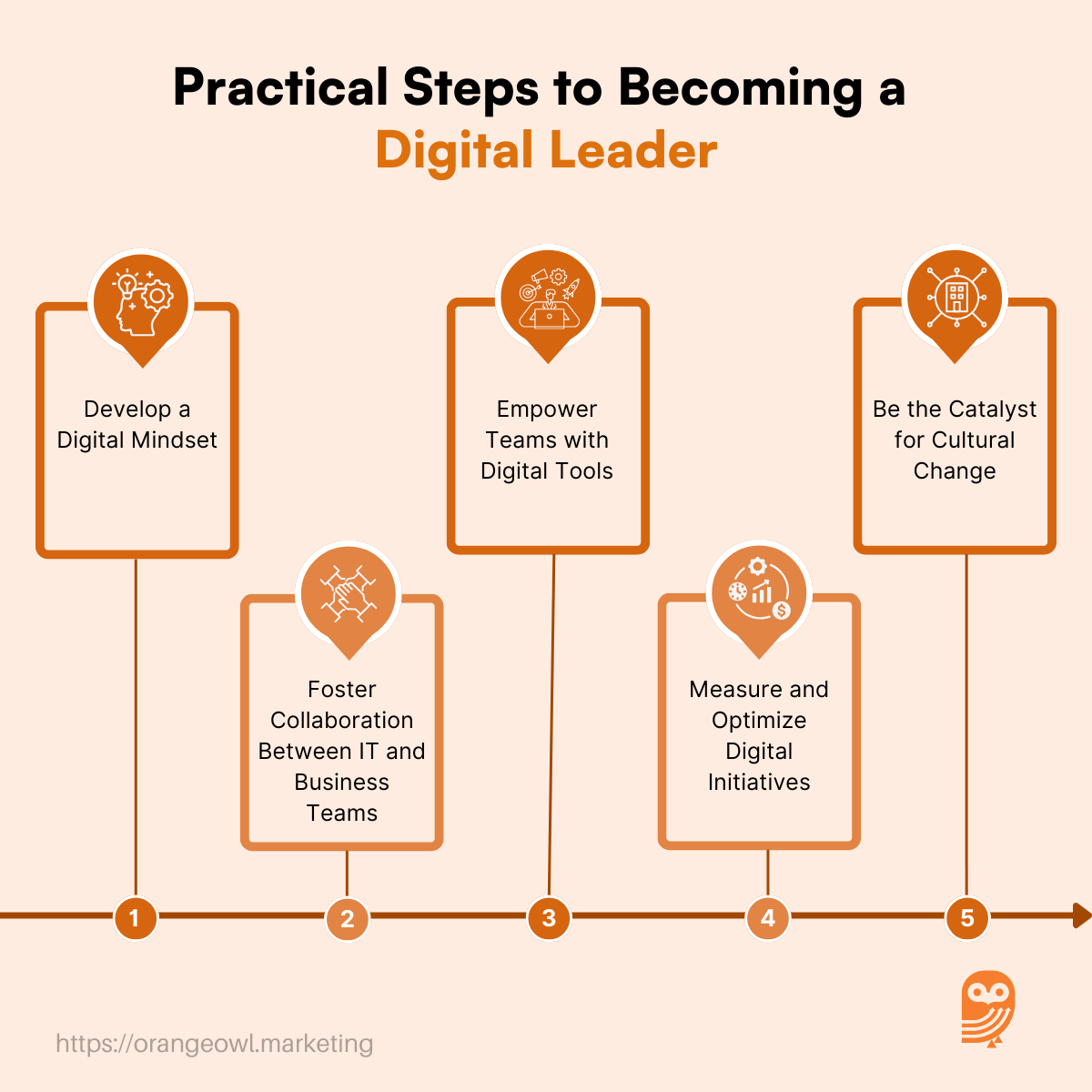The Impact of Digital Transformation on Leadership
Digital transformation affects every aspect of an organization, from operations to customer engagement. Leaders must adapt to these changes by rethinking their roles and approaches. Key impacts include:
Enhanced Decision-Making Through Data
Leaders now have access to real-time data analytics, enabling them to make informed decisions. However, this also demands a deep understanding of data interpretation and its implications.
Fostering Agility in a Rapidly Changing Landscape
The pace of technological advancements requires leaders to embrace flexibility, pivot strategies quickly, and foster a culture of adaptability.
Driving Innovation
Leaders must champion the use of emerging technologies like AI, IoT, and blockchain to stay competitive and create value for customers.
Collaboration Across Borders
Digital tools facilitate seamless collaboration among distributed teams, requiring leaders to master virtual communication and relationship-building.
Essential Traits of a Digital Leader
Visionary Thinking
Digital leaders must anticipate industry trends and align technological investments with long-term goals.
Tech-Savviness
While leaders don’t need to be coders, they must understand the potential and limitations of technology to guide strategic decisions effectively.
Customer-Centric Approach
Leaders should use technology to enhance customer experiences, from personalized marketing to streamlined service delivery.
Collaborative Leadership
Encouraging cross-functional collaboration and leveraging diverse perspectives is critical in a digital ecosystem.
Resilience and Adaptability
Digital leaders must remain resilient in the face of rapid changes and uncertainties, adapting their strategies as needed.

Strategies for Leveraging Technology Effectively
Align Technology with Business Goals
What to Do: Ensure every technology initiative aligns with your organization’s objectives. Avoid adopting technology for the sake of trends.
Example: A retail company implementing AI-powered recommendation systems to boost online sales aligns with its goal of enhancing customer engagement.
Invest in Upskilling and Training
What to Do: Provide employees with training on new tools and platforms to bridge skill gaps.
Example: A digital leader introduces a training program on data analytics for their marketing team, enabling them to derive actionable insights from customer data.
Build a Culture of Innovation
What to Do: Encourage experimentation and reward innovative ideas to foster a forward-thinking environment.
Example: A software company holds quarterly hackathons where employees can pitch and develop innovative ideas, leading to new product features.
Leverage Data for Strategic Insights
What to Do: Use advanced analytics to identify trends, understand customer behavior, and optimize processes.
Example: A logistics company uses predictive analytics to anticipate demand surges, improving supply chain efficiency.
Embrace Agile Methodologies
What to Do: Implement agile frameworks for rapid iteration and responsiveness to market changes.
Example: A tech startup adopts agile sprints to launch MVPs (Minimum Viable Products) faster and refine them based on user feedback.
Challenges Digital Leaders Face and How to Overcome Them
Resistance to Change
Challenge: Employees and stakeholders may resist new technologies or processes.
Solution: Communicate the benefits clearly, involve teams in decision-making, and provide ongoing support.
Cybersecurity Risks
Challenge: Increased reliance on digital tools raises vulnerability to cyber threats.
Solution: Invest in robust cybersecurity measures and conduct regular audits to protect sensitive data.
Balancing Short-Term and Long-Term Goals
Challenge: Focusing on immediate gains may hinder long-term digital transformation.
Solution: Develop a roadmap that prioritizes quick wins while aligning with strategic goals.
Overwhelming Technological Options
Challenge: The plethora of tools and platforms can lead to decision paralysis.
Solution: Evaluate options based on scalability, ROI, and alignment with business needs.
Practical Steps to Becoming a Digital Leader
Develop a Digital Mindset
Stay curious and continuously learn about emerging technologies. Attend industry webinars, follow thought leaders, and engage in hands-on experimentation.
Foster Collaboration Between IT and Business Teams
Break down silos to ensure that technology initiatives are integrated seamlessly into business strategies.
Empower Teams with Digital Tools
Equip employees with user-friendly tools to enhance productivity and collaboration. Focus on tools that simplify workflows rather than complicate them.
Measure and Optimize Digital Initiatives
Use KPIs to track the success of digital strategies and refine them based on measurable outcomes. Regularly solicit feedback from teams and stakeholders.
Be the Catalyst for Cultural Change
Lead by example by embracing digital tools and fostering an open mindset towards experimentation and adaptation.
A Hypothetical Scenario of Digital Leadership in Action
Scenario:
A mid-sized manufacturing company faces declining sales due to outdated processes and an inability to meet customer demands for customization.
Action Plan as a Digital Leader:
1. The leader begins by conducting a digital readiness assessment to identify gaps in technology and skills.
2. They implement a cloud-based ERP system to streamline operations and improve inventory management.
3. To meet customer demands, the leader introduces a 3D visualization tool on the company’s website, allowing customers to customize products before ordering.
4. Employees receive training on the new tools to ensure a smooth transition.
5. KPIs such as order accuracy and customer satisfaction are tracked, demonstrating a 30% increase in sales within a year.
Outcome:
The company successfully leverages technology to modernize its processes, enhance customer experience, and boost profitability.
Conclusion: Thriving Through Digital Leadership
Digital leadership, something we pay a lot of importance to at Orange Owl, is about more than implementing the latest technologies—it’s about aligning these tools with organizational goals, empowering teams, and fostering a culture of innovation. By embracing a customer-centric approach, leveraging data, and staying agile, leaders can navigate the challenges of digital transformation and drive sustainable success.
At Orange Owl, we specialize in helping leaders harness technology to unlock their organization’s full potential.



